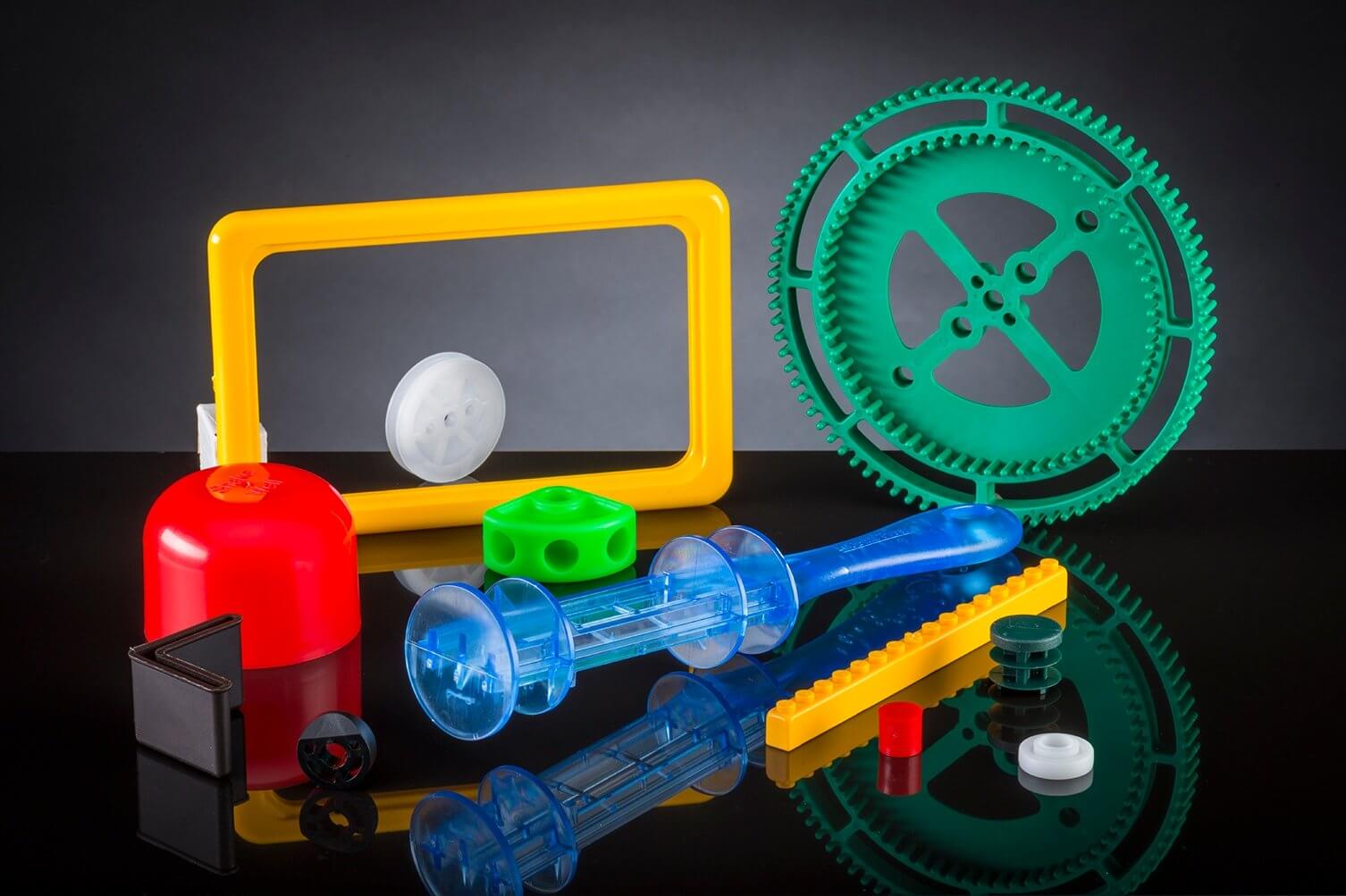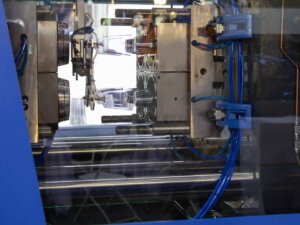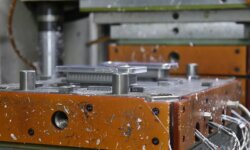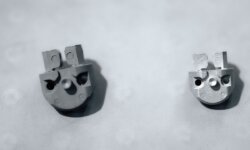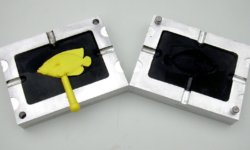Injection molding is the most widely used manufacturing process for plastic parts. So it’s no surprise that there are many plastics available for injection molding, all of which are available in pellet form.
Moldable plastics range from highly durable polycarbonate to impact-resistant ABS.
This guide looks at 15 of the most popular plastics used for injection molding. Each injection material has its own unique set of advantages making it suitable for specific applications.
1. Acrylonitrile butadiene styrene (ABS)
ABS is a massively popular thermoplastic injection material with excellent toughness, elasticity and impact resistance.
Molded ABS parts include shock absorbers, enclosures, plastic canoes, musical instruments, medical devices and toys.
Because it can be molded or extruded, ABS is also widely used in 3D printing.
2. Polycarbonate (PC)
PC is a strong and tough engineering-grade thermoplastic. Despite its desirable properties, it is easy to work and mold.
Manufacturers use PC pellets to make molded parts for computing, aerospace, and medical applications. Many smartphone cases and covers are also made from PC.
PC can be mixed with glass (PC-GF) for excellent impact resistance and low moisture absorption.
3. ABS polycarbonate (PC-ABS)
By combining ABS and PC, it is possible to gain the desirable mechanical properties of PC and the formability of ABS.
PC-ABS molded parts include automotive parts like glove boxes, TV frames, keypads and structural components.
4. Polypropylene (PP)
PP is a rugged thermoplastic polymer with a high level of chemical resistance. After polyethylene, it is the second most popular commodity plastic.
Injection molding can be used to create PP products like plastic furniture, piping, fittings, living hinges and food-safe containers.
5. Polystyrene (PS)
PS is a hydrocarbon polymer that is hard, brittle and very inexpensive.
Common applications of PS as an injection material include disposable cutlery, CD cases, test tubes and microplates.
PS can also be combined with polyphenyl ethers (PS-PPE), providing excellent heat resistance and dimensional stability.
6. Acetal polyoxymethylene (POM)
POM is a high-performance engineering thermoplastic with high stiffness and excellent dimensional stability.
Common POM injection molded parts include handles, fasteners, gear wheels and automotive parts.
7. Nylon 66 (PA66)
Nylon 66 is one of the most widely used injection molding plastics in the nylon / polyamide family. It offers a high level of rigidity, mechanical strength and resistance to heat and chemicals.
Molded Nylon 66 can be used for pipes, conveyor belts, automotive components, zip ties and more.
Polyamides can also be mixed with glass (PA-GF) for extra thermal stability.
8. Polymethyl methacrylate (acrylic) (PMMA)
PMMA or acrylic is a transparent thermoplastic sometimes used as an alternative to glass. Though brittle, acrylic is shatter-resistant.
Molded PMMA can be used in lenses, windows, electronic casings, jewelry and much more. There are few better options for transparent molded parts.
9. High-density polyethylene (HDPE)
HDPE is an ethylene-derived thermoplastic polymer with a very high strength-to-density ratio.
The material is recyclable and commonly used to make plastic bottles and piping for potable or waste water.
10. Low-density polyethylene (LDPE)
LDPE is a less crystalline polyethylene with slightly more branching than HDPE. This gives the injection material a lower tensile strength but higher resilience.
Molded LDPE is commonly used for packaging and containers, as well as plastic computer components.
11. Polyethylene terephthalate (PET)
PET is a thermoplastic polymer and a widely used polyester injection material. It is lightweight, strong and impact-resistant.
Injection molded PET is widely used for recyclable plastic bottles, as well as trays, blister packs and other forms of packaging.
12. Polybutylene terephthalate (PBT)
PBT is an engineering thermoplastic and a type of polyester. It has a high level of mechanical strength and good impact resistance. It is also resistant to solvents.
Injection molded PBT parts include electrical housings, connectors and keyboard keycaps.
The material is often treated with phosphorus-based flame retardant systems to make it fire-safe.
13. Polyphenylene sulfide (PPS)
PPS is a high-temperature thermoplastic polymer with excellent heat resistance, abrasion resistance and chemical resistance.
Due to its flame retardant properties, PPS is often used for molded electrical parts like air conditioning components and kitchen appliances.
It is also popular for industrial parts like pumps, valves and piping.
14. Thermoplastic elastomer (TPE)
TPE or thermoplastic rubbers are copolymers with thermoplastic and elastomeric properties. They have excellent thermal properties and material stability.
Injection molded TPE is often used for automotive parts and medical components like catheters.
15. Thermoplastic vulcanizates (TPV)
TPV is part of the TPE family with particular advantages in injection molding. It is highly durable with excellent dimensional stability.
Molded TPV is often used for watertight seals and gaskets, which are common in many industries.
Learn more about 3ERP’s injection molding services and parts, and get in touch for a free quote.
